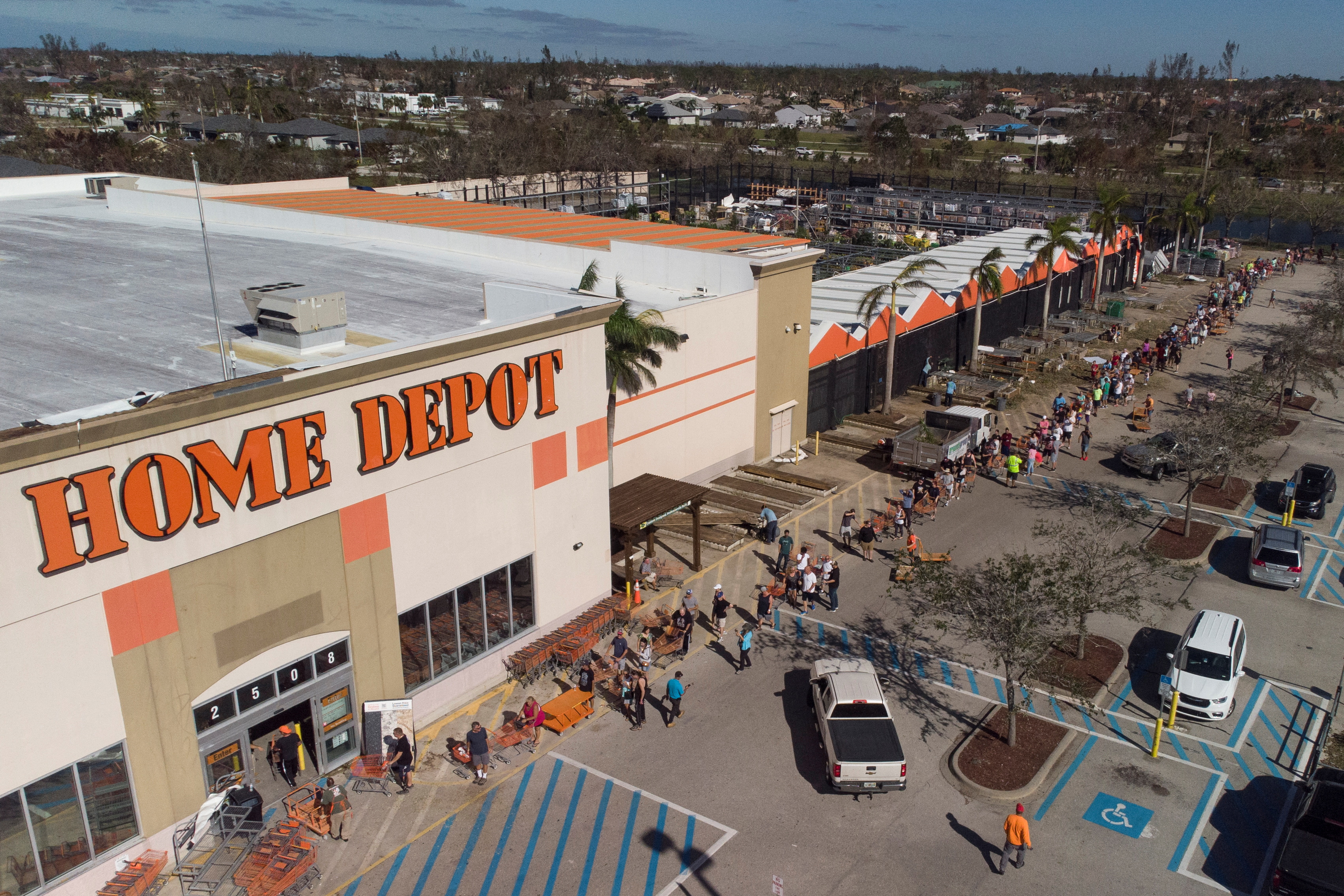
A resurgent Hurricane Ian has made a second landfall in the United States – this time in South Carolina – a day after the storm carved a path of destruction across central Florida that left rescue crews racing to reach trapped residents.
Ian, which had weakened to a tropical storm during its march across Florida, was upgraded to a Category 1 hurricane as it churned above the Atlantic Ocean towards South Carolina on Friday, the US National Hurricane Center (NHC) said.
The centre of the hurricane swept ashore near Georgetown, north of the historic city of Charleston, with maximum sustained winds of 140 kilometres per hour (85 miles per hour), as well as potentially life-threatening flooding and storm surges.
Officials in Georgia, South Carolina and North Carolina have urged residents to prepare for dangerous conditions.
Kelsey Barlow, a spokeswoman for Charleston County, home to more than 400,000 South Carolina residents, said two local shelters were open and a third was on standby. “But it’s too late for people to come to the shelters,” she said.
“The storm is here. Everyone needs to shelter in place, stay off the roads.”
Barlow said a storm surge of more than 2.1m (seven feet) was expected, on top of the noon high tide that could bring another 1.8m (six feet) of water, causing significant flooding.
Len Cappe, 68, a retired property manager who moved to Charleston two years ago, said Ian was the first big storm he has encountered. “It’s the wind, it rattles you,” Cappe said. “It’s blowing furiously.”
With the tidal Wando River a block away, Cappe said he was worried about his house and has been glued to his television, watching for updates. On Pawleys Island, just north of Georgetown, the pier had collapsed into the ocean and town hall was surrounded by water, according to videos and messages posted online by the local police department.
More than 145,000 homes and businesses in the Carolinas were without power, according to the tracking website PowerOutage.us.
Florida assesses damage
Ian came ashore on Wednesday on Florida’s Gulf Coast as a monstrous Category 4 hurricane, one of the strongest storms ever to hit the US.
It flooded homes on both the state’s coasts, cut off the only road access to a barrier island, destroyed a historic waterfront pier and knocked out electricity to 2.6 million Florida homes and businesses — nearly a quarter of utility customers.
Authorities in the US state offered the first death toll estimate on Friday, as power outages and a lack of mobile phone service in many areas had made it impossible to reach residents cut off by floodwaters, downed electricity lines and debris, or assess the full scope of the storm’s damage.
Kevin Guthrie, director of Florida’s Division of Emergency Management, said the hurricane has caused at least 21 confirmed and unconfirmed deaths so far.
Among those killed were an 80-year-old woman and 94-year-old man who relied on oxygen machines that stopped working amid power outages, the Sarasota County Sheriff’s Office said. In New Smyrna Beach, a 67-year-old man who was waiting to be rescued died after falling into rising water inside his home, the Volusia County Sheriff’s Office said.
On Friday, US President Joe Biden warned that it could take months, or even years, to rebuild parts of Florida that have been devastated by the storm. “It’s not just a crisis for Florida, this is an American crisis,” he said during a news briefing. “We’re all in this together.”
Biden has approved a disaster declaration, making federal resources available to areas impacted by Ian. Nearly 2,000 federal emergency response personnel were deployed to Florida within 24 hours of the storm first making landfall, the White House said.
Federal Emergency Management Agency Director Deanne Criswell will be in Florida on Friday.
Meanwhile, rescue crews have piloted boats and waded through riverine streets to save thousands of Floridians trapped amid flooded homes and buildings shattered by the hurricane.
Governor Ron DeSantis said at least 700 rescues, mostly by air, were conducted on Thursday, in operations that involved the US Coast Guard, the National Guard and urban search-and-rescue teams.
“There’s really been a Herculean effort,” he said during a news conference on Friday in state capital Tallahassee, adding that rescue crews had gone door-to-door to more than 3,000 homes in the hardest-hit areas.
‘We’re feeling lost’
Some 10,000 people were unaccounted for across the state, said Guthrie at the Division of Emergency Management, but many of them were likely in shelters or without power, making it impossible to check in with loved ones or local officials.
He said he expected the number to “organically” shrink in the coming days.
Fort Myers, a city close to where the eye of the storm first came ashore, absorbed a major blow, with numerous houses destroyed. Businesses near the beach were completely razed, leaving twisted debris, while broken docks floated at odd angles beside damaged boats.
Hundreds of beleaguered Fort Myers residents lined up at a Home Depot that opened early on Friday on the east side of the city, hoping to buy petrol cans, generators, bottled water and other supplies.

Many said they felt the city and state governments were doing everything possible to help people but said the lack of communication and uncertainty about how they would go on living in the area weighed heavily on them.
Sarah Sodre-Crot and Marco Martins, a married couple and both 22, immigrated from Brazil with their families five years ago, said they rode out the storm in their home in east Fort Myers.
“I know the government is doing everything they can, but we’re feeling lost, like we have no answers. Will energy return in a week? In a month? We just want to know so we can plan our lives a bit,” Sodre-Crot said.
About two million homes and businesses remained without power on Friday, according to tracking service poweroutage.com.







